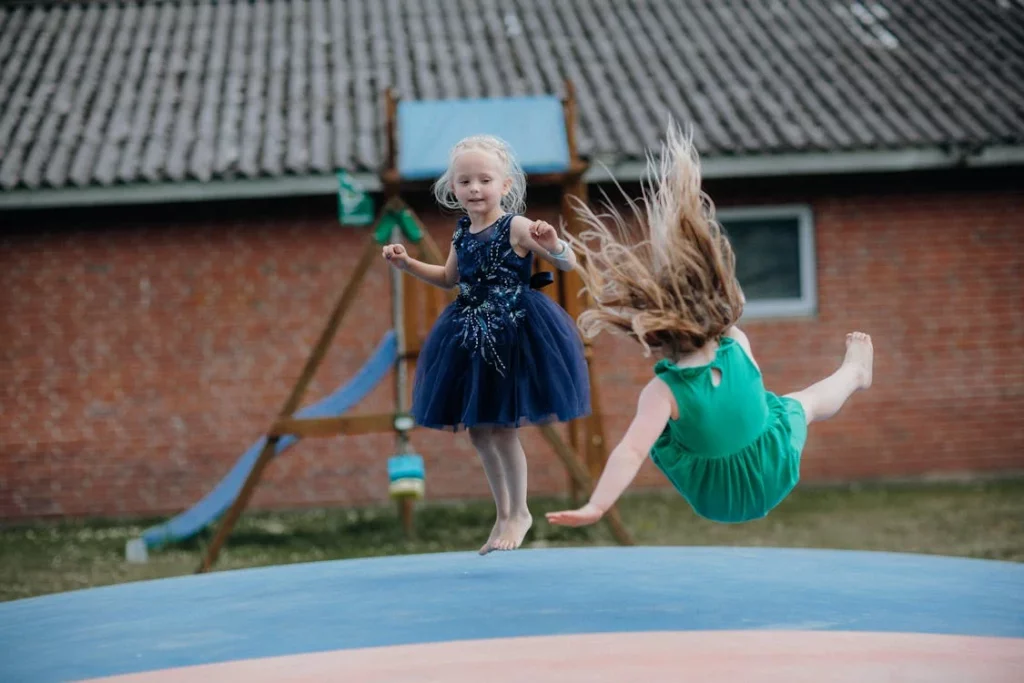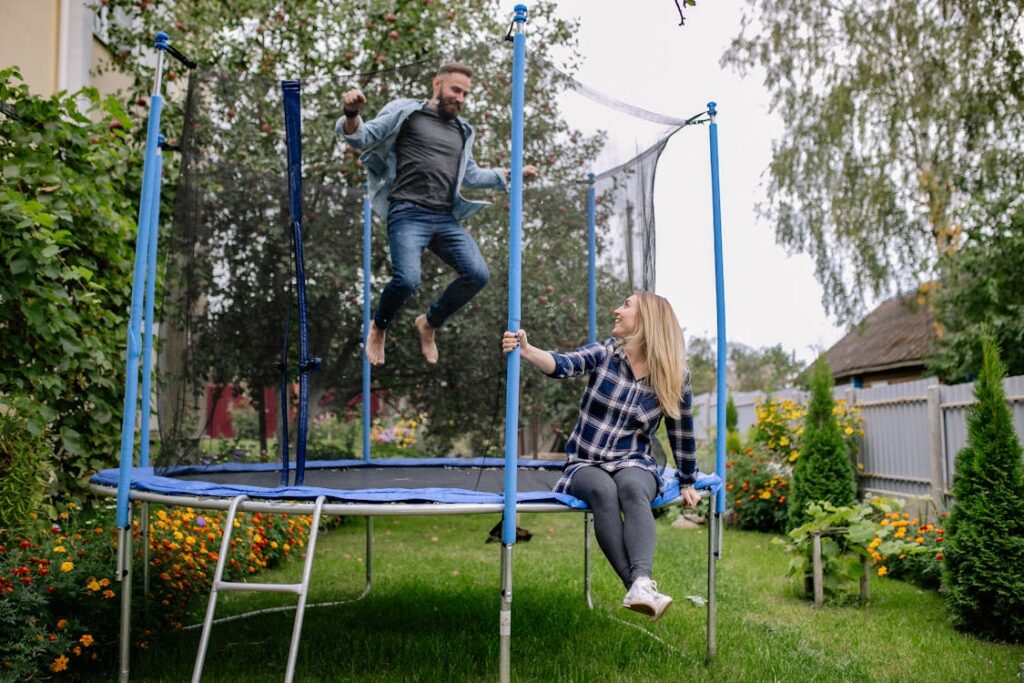Whether you’re bouncing with joy at a trampoline park or watching your kids leap with excitement in the backyard, trampolines have a way of bringing out the fun in any day. But with all the thrills come some concerns—many people wonder, “Os trampolins são perigosos?” In this guide, we will give safety aspects of trampolines that are key to ensuring that everyone can enjoy the fun without unnecessary risk.

Are Trampoline Parks Safe?

Trampoline parks have become a popular entertainment choice, with over 1,000 indoor trampoline parks operating in the United States alone. These parks attract millions of visitors each year, offering a diverse range of activities such as free jumping, dodgeball, e pistas de obstáculos. They cater to various age groups and skill levels, making them a favorite destination for family outings, birthday parties, and group events.
The benefits of trampoline parks are notable. They provide an exhilarating way to get exercise, improve cardiovascular health, enhance coordination, and strengthen muscles. For children, trampoline parks offer a structured environment to burn off energy, develop motor skills, and enjoy physical activity in a social setting.
No entanto, trampoline parks are not without their risks. Trampoline injuries have become a significant concern. Data from the American Academy of Pediatrics reveals that trampoline-related injuries have increased over the years. Each year, approximately 100,000 injuries occur in the United States alone, with a substantial number requiring emergency room visits. This highlights the importance of certified trampoline parks under safety standards, safety guidelines, and precautions to minimize risks and ensure a safe and enjoyable experience at trampoline parks.
What Are the Common Injuries?
Trampoline injuries can range from minor sprains and strains to more serious conditions such as fractures, concussions, and even spinal injuries. The most common injuries include:
- Ankle and Knee Injuries: Often resulting from improper landing or sudden movements.
- Fractures: Typically occur from falls or collisions with other jumpers or trampoline parts.
- Head and Neck Injuries: Can happen due to flips or falls, sometimes leading to more severe consequences.
- Sprains and Strains: Common from overexertion or awkward landings.
These injuries can be particularly severe when multiple jumpers are on the trampoline simultaneously or when participants engage in risky behaviors.
Safety Guideline to Avoid Injuries

When asking whether outdoor and indoor trampolines are safe, it’s important to consider some practical safety guidelines to help keep everyone bouncing happily and injury-free. Here’s a friendly guide to ensuring a safe and enjoyable trampoline experience.
Limit Jumpers to One at a Time
It’s best to have only one person on the trampoline at a time to keep things safe and fun. When multiple people are jumping together, the risk of collisions and falls increases. By sticking to one jumper, you’ll significantly reduce the chances of accidents and ensure a smoother, safer bounce.
Avoid Flipping
Flipping on a trampoline might look impressive, but it’s a major risk factor for serious injuries. Studies show that flips and other advanced maneuvers contribute to a high percentage of trampoline accidents. It’s wise to keep the jumps simple and focus on having fun without the added risk of flips.
No Rough Play
Roughhousing, like pushing or shoving, can lead to unexpected accidents. It’s easy to get carried away, but encouraging gentle play helps prevent injuries. Keeping the fun friendly and respectful ensures everyone stays safe while bouncing around.
Keep Pets Away
Pets and trampolines don’t mix well. Animals can get startled by the bouncing, which might lead to them darting around unpredictably and causing accidents. To keep both pets and people safe, it’s best to keep furry friends away from the trampoline area.
Disinfect Trampoline
Regular cleaning and disinfecting of the trampoline are key to maintaining a healthy jumping surface. Trampolines can gather dirt and sweat, which could lead to infections. A weekly wipe-down helps keep things fresh and hygienic, ensuring a cleaner bounce.
Always Supervise When Needed
Keeping an eye on younger children or new jumpers is essential for safety. Supervision allows you to step in if needed and helps ensure that everyone is following the rules. This extra attention can make a big difference in preventing accidents and keeping the fun going smoothly.
No Access Under the Trampoline
The space beneath the trampoline should be off-limits to avoid potential entrapments and injuries. Kids might think it’s a fun hide-and-seek spot, but keeping this area clear helps prevent falls and other accidents. A clear, safe jumping area is crucial for a good experience.
Jump in the Center
Encouraging jumpers to stay in the center of the trampoline helps maintain balance and stability. The middle area provides a more consistent bounce and reduces the risk of falling off. It’s a simple way to keep the fun and safety in balance.
Enter and Exit with Caution
When getting on and off the trampoline, it’s important to do so carefully. Avoid jumping on or off abruptly and use designated entry and exit points to prevent sudden movements that could lead to accidents. A careful approach ensures everyone stays safe while enjoying their bounce.
Establish Clear Rules
Setting clear rules for trampoline use helps keep everyone on the same page. Outline basic guidelines, like no rough play and one jumper at a time, to manage risks effectively. Clear communication about these rules contributes to a safer and more enjoyable trampoline experience for all.
Conclusão
Os trampolins são perigosos? While they do come with risks, following proper safety guidelines can significantly reduce these dangers. With the right precautions in place, trampolines can provide endless hours of bouncing joy while keeping the focus on fun and fitness. Embrace the excitement while prioritizing safety, and your trampoline experience will be thrilling and secure.

